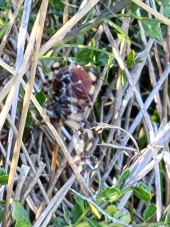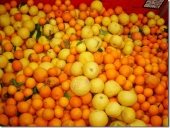








































 1
1








leila hamaya wrote:wowie that is an extravaganza...
actually i am stumped or unsure on many, but this is what i got for you -
#1 looks a lot like wild lettuce in the foilage, but not in the flower. some rare type of wild lettuce is my guess
#2 reminds me of a hibiscus, particularly the seed pod photos. so some kind of hibiscus or malva family.
#3 i dont know the name, but i recognize it by having weeded it out.
#4 i think it is sedum, that seems to be one of the more common types? pic of sedum
#6 is bindweed ish, morning glory, bindweed.
# 9 is it monarda ? some kind of bee balm, or bergamont?
 2
2





 1
1




 1
1





'What we do now echoes in eternity.' Marcus Aurelius
How Permies Works Dr. Redhawk's Epic Soil Series




leila hamaya wrote:ooo i think i found it ======>>>
Abutilon theophrasti
or at least much closer, maybe??
or other related plant :
Abutilon indicum




Joylynn Hardesty wrote:#10
Eupatorium serotinum Late Boneset
http://www.illinoiswildflowers.info/prairie/plantx/late_bonesetx.htm
 1
1




Brendan Danley wrote:
leila hamaya wrote:ooo i think i found it ======>>>
Abutilon theophrasti
or at least much closer, maybe??
or other related plant :
Abutilon indicum
Whammo! Nice Leila! It cracks me up when an article lists a plant as both "invasive/damaging" AND Edible. lol Apparently the leaves can be eaten. I find this is the case with many so called weeds.
 1
1








Rose Pinder wrote:#3 looks like willow weed, whatever your local Persicaria spp is.
http://naturewatch.org.nz/observations/381867
 1
1




 1
1




 2
2




 1
1




Deb Stephens wrote:
6 -- Wild sweet potato vine (Ipomea pandurata) -- has edible, starchy roots.
Yes. You are right. Bindweed lobes are higher on the leaves.
7 -- Saint Johnswort? Unless this photo is an extreme close up of only one flower on a spike. (Or could be St. Andrew's cross -- they look very much alike. Hypericum spp.)
Doesn't St. Johnswort have fewer petals? St. Andrew's even has fewer petals.
9 -- Joe Pyeweed (Eupatorium purpureum) A great butterfly plant.
Looks like Knapweed of some sort. The coloring is more like Ironweed, but the leaves are wrong, and I never seen Joe Pye Weed with multiple leaflets, but I may be wrong. Also flowers for Joe Pye weed are not as generally as deep purple as those shown.








 1
1




'What we do now echoes in eternity.' Marcus Aurelius
How Permies Works Dr. Redhawk's Epic Soil Series
 1
1




mitch brant wrote:
Deb Stephens wrote:
6 -- Wild sweet potato vine (Ipomea pandurata) -- has edible, starchy roots.
Yes. You are right. Bindweed lobes are higher on the leaves.
7 -- Saint Johnswort? Unless this photo is an extreme close up of only one flower on a spike. (Or could be St. Andrew's cross -- they look very much alike. Hypericum spp.)
Doesn't St. Johnswort have fewer petals? St. Andrew's even has fewer petals.
9 -- Joe Pyeweed (Eupatorium purpureum) A great butterfly plant.
Looks like Knapweed of some sort. The coloring is more like Ironweed, but the leaves are wrong, and I never seen Joe Pye Weed with multiple leaflets, but I may be wrong. Also flowers for Joe Pye weed are not as generally as deep purple as those shown.
 ) It would help to know the size of the blooms. I couldn't tell if this was a closeup of one bloom in a group or spike, or a single flower at normal distance. Looking a bit more carefully, I think it may, indeed, be a goldenrod of some sort. Hard to tell without a shot of the whole plant, rather than the closeup alone. There are a LOT of Solidago species, so several shots at different distances would be helpful. Guessing it could be Solidago virgaurea, but that is only a guess based on the petal numbers and shape.
) It would help to know the size of the blooms. I couldn't tell if this was a closeup of one bloom in a group or spike, or a single flower at normal distance. Looking a bit more carefully, I think it may, indeed, be a goldenrod of some sort. Hard to tell without a shot of the whole plant, rather than the closeup alone. There are a LOT of Solidago species, so several shots at different distances would be helpful. Guessing it could be Solidago virgaurea, but that is only a guess based on the petal numbers and shape.



 1
1




 1
1




Hester Winterbourne wrote:I would still take some convincing that #9 is not some sort of knapweed, whatever the leaves look like. The scaly bracts behind the flowerhead are so distinctive.

|
I have begun to write a book. I already have all the page numbers done! And one tiny ad:
The new gardening playing cards kickstarter is now live!
https://www.kickstarter.com/projects/paulwheaton/garden-cards
|






